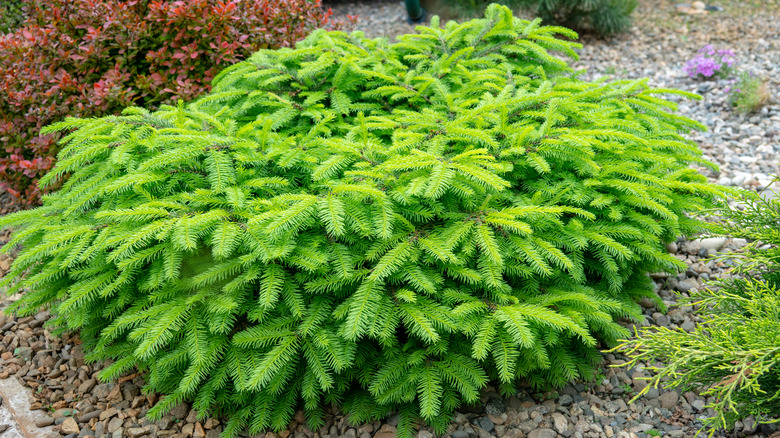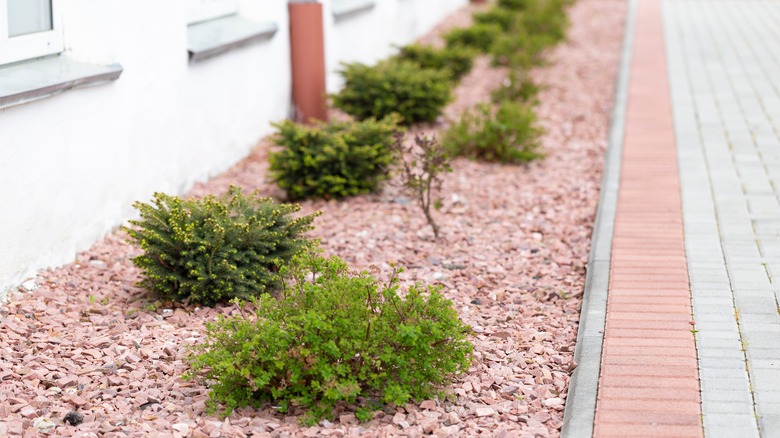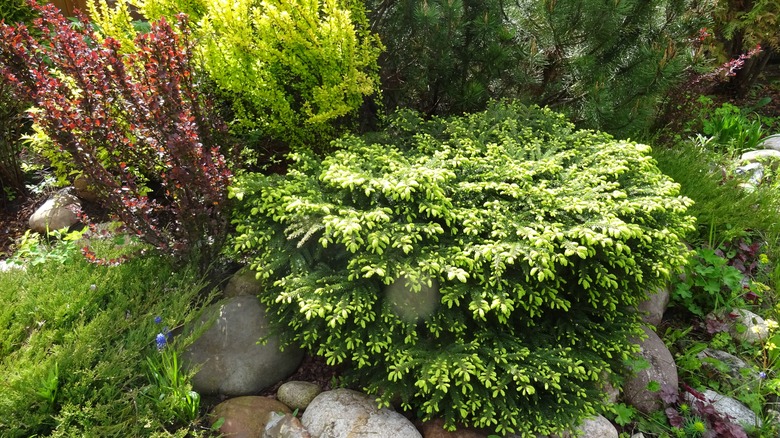How To Grow A Spectacular Bird's Nest Spruce (& Essential Care Tips For Success)
Named for its low rounded shape and depressed center that makes it resemble a nest, the bird's nest spruce (Picea abies 'Nidiformis') is a perfect evergreen landscape option. Unlike many spruces that can easily reach heights over 70 feet, bird's nest spruces seldom grow over a few feet tall and wide. That being said, over the course of decades, they will continue to grow and inevitably get taller and wider. As long as you can meet the shrub's temperature, sunlight, and soil needs, it could be the ideal addition to your yard. They are generally quite easy to care for, too.
The bird's nest spruce is a dwarf cultivar of the Norway spruce and largely thrives in similar conditions to its larger relative. Both trees are quite cold tolerant, with the common Norway spruce thriving in USDA hardiness zones 2 through 7, and bird's nest spruce in zones 3 through 6. Unfortunately, they are not especially heat or drought tolerant, so if you live in zone 7 or above, you may need to look elsewhere for a dwarf evergreen tree that won't take over your yard.
Where to plant a bird's nest spruce
Because bird's nest spruces stay quite petite and have shallow roots, they make excellent foundation plants. Just make sure your little tree is in full sun and has acidic and well draining soil. It also requires its soil to stay relatively moist, so be sure to stay on top of watering it, especially if you have a dry spell.
While bird's nest spruces are dwarf trees and only reach heights of 2 feet or less in their first several years of growth, fully mature specimens (those closer to 30 years old) can sometimes get as large as 8 feet tall and 12 feet wide. Be sure to take this into consideration when planting your little spruce and give it plenty of space to grow, meaning don't place each plant too close to one other. Because they, like many dwarf trees, don't tend to handle pruning well, controlling the size of a bird's nest spruce through trims may not be realistic.
Using companion plants and containers for bird's nest spruces
To avoid having empty space in your garden while waiting for your bird's nest spruce to fill in, consider growing annuals as a colorful living mulch around your tree. Not only will these plants temporarily fill in the space, but they'll also prevent weeds from taking over. Short-lived perennials, meaning perennials with a lifespan of around five years or less, are also excellent options for this, as they will supplement the space as the bird's nest spruce bulks up.
Even if your yard doesn't have the best soil for a bird's nest spruce, you can still live your dreams of owning the charming little plants. The pint-sized spruce makes a perfect container plant. Growing your bird's nest spruce in a container will also make it easier to move it to a more protected location during a heat wave, if necessary. Just be sure to water it more regularly, as plants in containers generally dry out more quickly than those grown in the ground.


